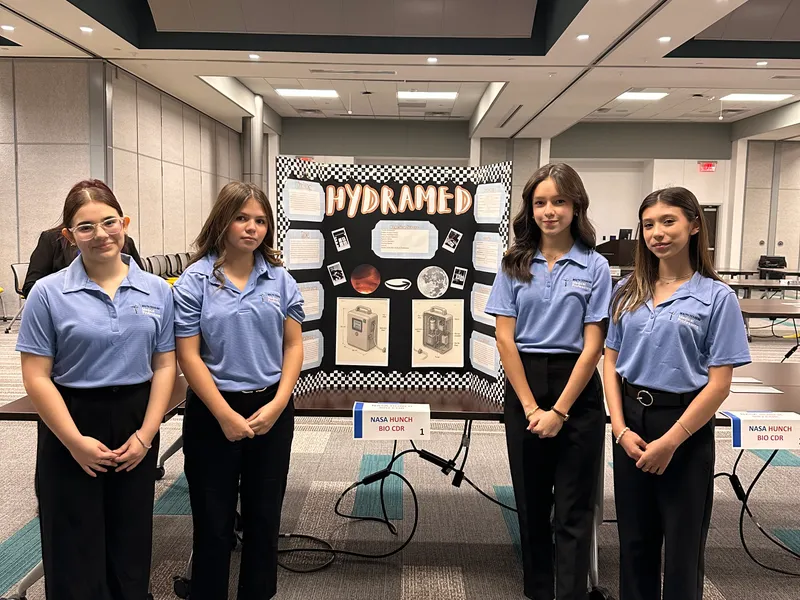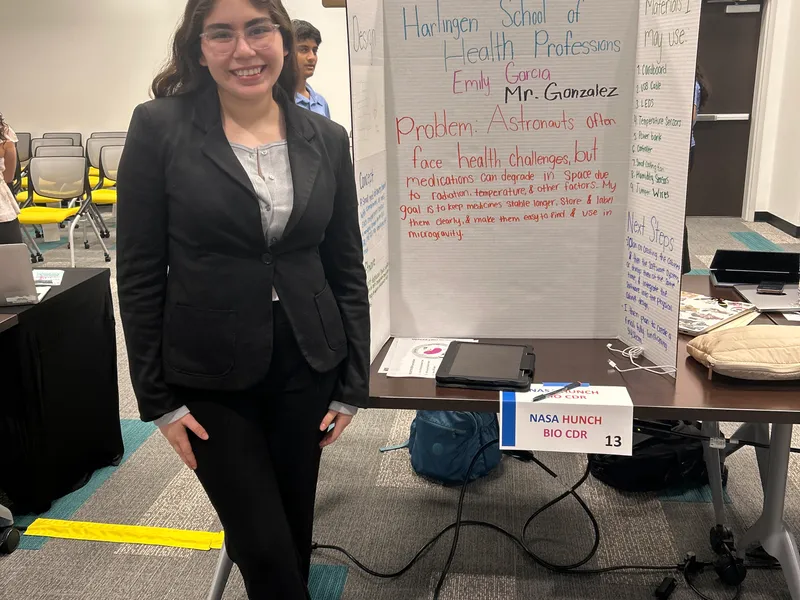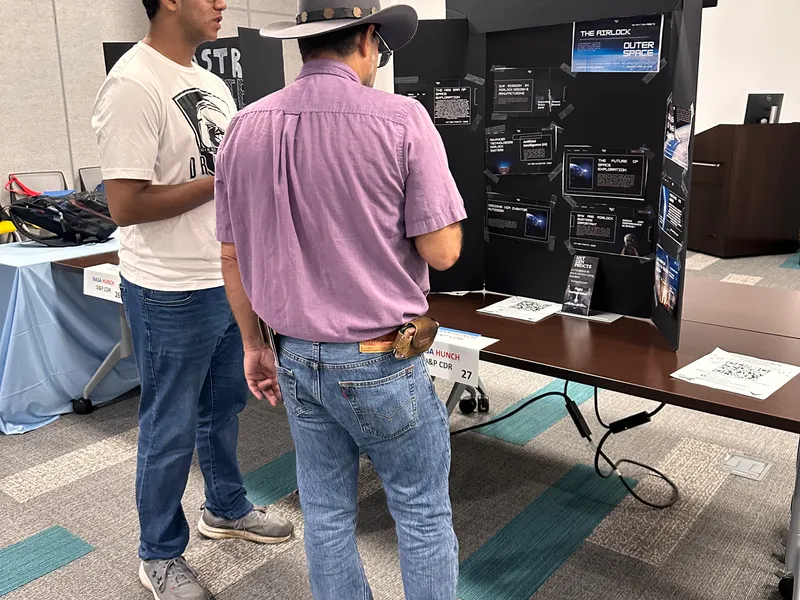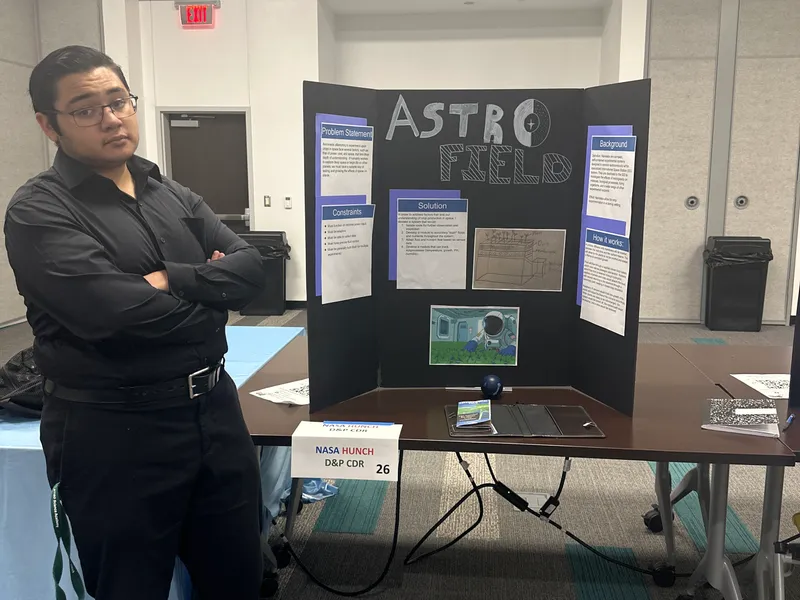PDRs mark one of the first milestones in NASA HUNCH projects, where students present their early-stage concepts, test data, and design reasoning to engineers and mentors. These reviews help refine ideas, ensure feasibility, and prepare each team for future development and testing phases – bringing the classroom closer to the cosmos.
This year’s PDR highlighted a remarkable range of student innovations, each designed to solve real challenges astronauts face in space. Here are some of the great ideas:
1. IV Fluid Generator
A team developed an IV Fluid Generator capable of transforming water into intravenous solution on demand. The compact, backpack-sized device can be powered by spacecraft systems and UV light, offering astronauts a reliable and portable medical resource for long-duration missions.

2. Kidney Stone Prevention Supplement
Another group focused on addressing the increased risk of kidney stones in microgravity. Their research examined physiological factors such as bone loss, calcium metabolism, dehydration, and diet, and proposed a supplement concept designed to maintain urinary health and reduce stone formation during extended spaceflight.

3. Radiation Mitigation Nutrition Patch
Students studying the effects of space radiation explored the impacts of galactic cosmic rays, solar particle events, and the Van Allen belts on human physiology. They introduced a prototype called the “Nutripatch,” a four-layer diffusion patch that delivers essential nutrients transdermally to help mitigate radiation-related degradation in the body.

4. Recycled 3D-Printed Chess Set
The Green Gambit team investigated how in-space waste could be repurposed through 3D printing. Using recycled plastic filament, they produced a functional chessboard and pieces of their own design – representing an early step toward sustainable recycling solutions for long-duration missions.

5. Biomedical Pharmacy System
One biomedical team is advancing how medications are stored and managed aboard spacecraft. Their project aims to improve shelf life, labeling clarity, and accessibility, ultimately creating a more efficient and organized onboard pharmacy for future astronauts.

6. AI-Integrated Airlock System
Junior researcher Garren Furtado is designing an AI-enhanced airlock to transport large payloads between a spacecraft’s interior and exterior while maintaining pressure and safety. The system incorporates artificial intelligence to track inventory, ensuring that every item’s movement is automatically logged and managed.

7. NanoLab Plant Growth System

